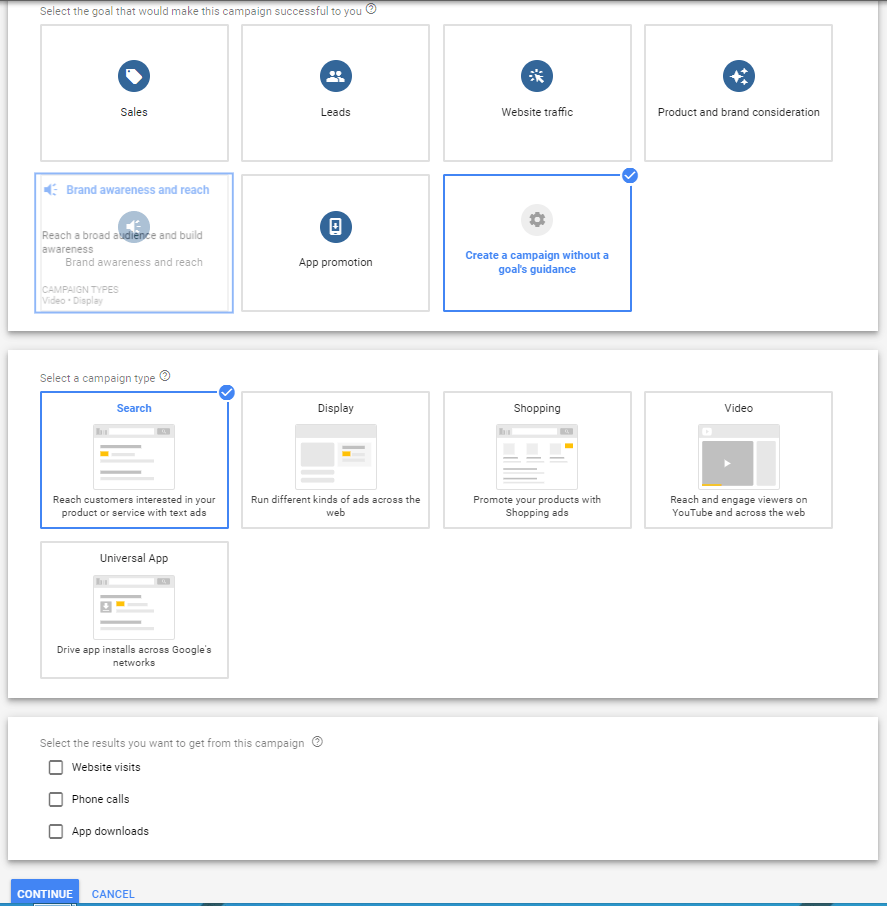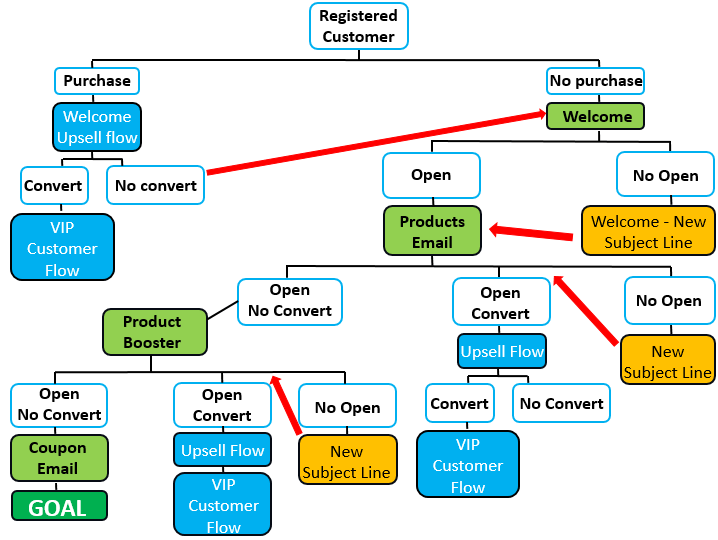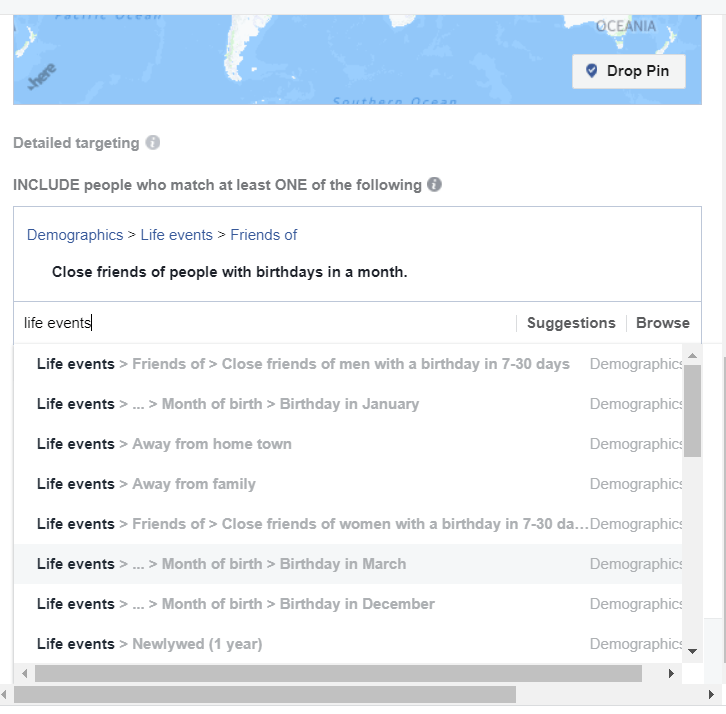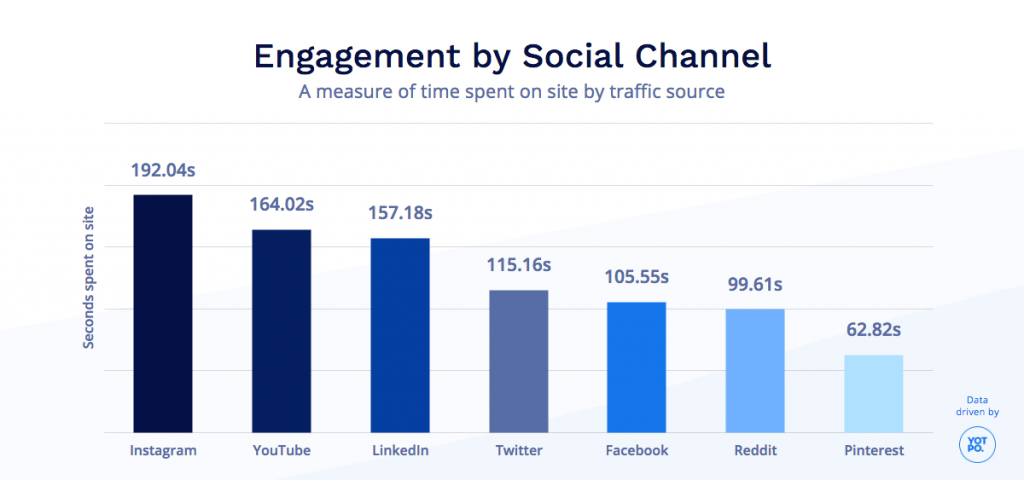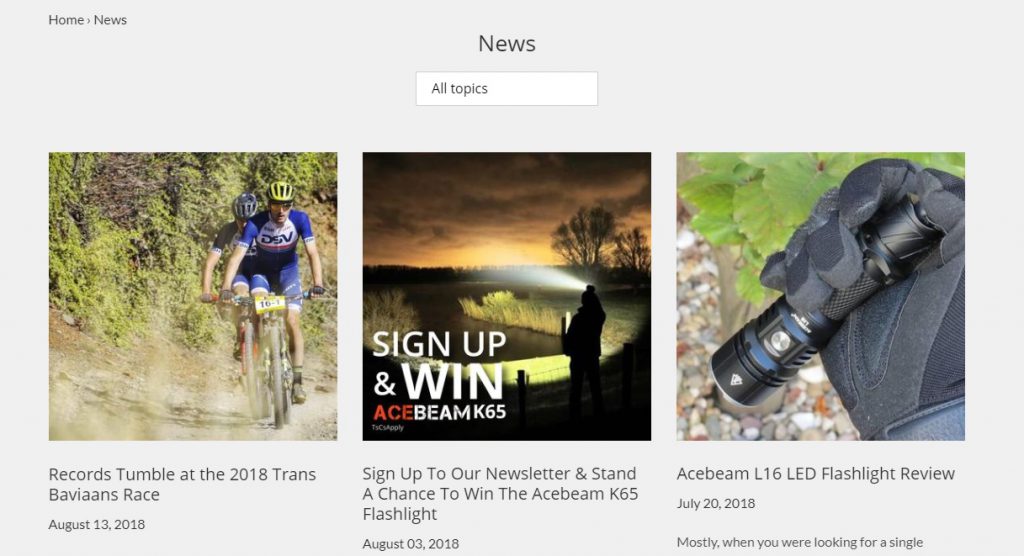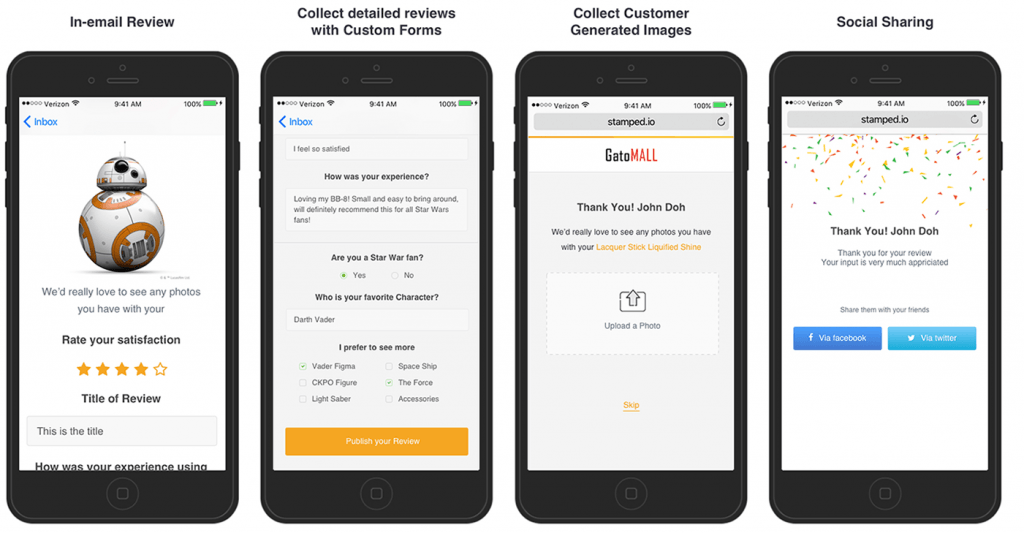Looking for ways to increase traffic to your online store? Of course you are! Traffic means more awareness, more people in your remarketing funnels and of course more sales! How can I increase traffic to my online store is the top question I get asked by both newbie and established eCommerce business owners on a regular basis.
As we learned when we debunked eCommerce traffic myths, there are only five substantial traffic sources to be putting your time and money into: search engines, social platforms, referral/link traffic, PPC and bookmarking. Each of these leading traffic sources provides a number of elements that you can tweak as a way to boost your eCommerce traffic.
So without further ado, let’s look at the 17 ways you can increase your online store traffic today!
1. Dive Deep into Your Data
The first thing you should be doing when looking for ways to increase traffic to your online store is diving deep into your analytics. You want to look at pages that are performing well in terms of traffic as well as ones that aren’t, to know exactly where your traffic is coming from now and see areas where it needs to be increased.
Bonus Content: The Biggest Analytics Lies and How to Spot Them
2. Increase Traffic to Your Online Store With On-Page SEO
In a world of instant traffic, it is easy to forget the value SEO brings to building constant organic traffic. On-page SEO optimization such as meta descriptions, alt image text, and internal links to other products or web content can make a world of difference in the long run and are easy to start implementing today. One of the most underutilized on-page SEO practices is internal links, which brings us to the next point.
3. Boost Traffic and Sales With Internal Links
Too many internal links can make your pages look spammy and be hard to read, so don’t overdo them. However, when used strategically, they can not only help with SEO but help create value for your shoppers, keep them on your site longer and ultimately create a better user experience. In eCommerce terms, this could be as simple as adding related products or links to product reviews on your product pages. Visit our How to Create Perfect Product Pages for Conversions post for more tips.
4. Increase Traffic by Generating Referral Traffic
Referral traffic is traffic that is generated when someone clicks a link to your store from another website. There are a few ways you can grow referral traffic, including:
- Leaving links on blogs and forums. (It is important, though, that these links are relevant to the content and are not spam)
- Creating blog content, as an expert in your niche, full of value that other websites will link back to
- Social media content and marketing
- Google Display and YouTube ads and content
- Guest blogging on other sites
- Being active on social media
- Submitting products for review
We’ll discuss a few of these in more detail further down our list.
5. Boost Traffic by Capitalizing on Google Search Ads
Google Search Ads are an absolute must in your traffic-boosting stockpile. This should include targeting new shoppers as well as remarketing to previous site visitors; including Dynamic Search Ads (DSA).
DSAs are search ads that are dynamically targeted by Google, based on the browser’s search queries. In other words, it matches your product pages or site to potential shoppers who are actively looking for what you’re selling, dynamically creating headlines and descriptions to attract shoppers to click – taking some of the burden and maintenance work off your hands. You can find out everything you need to know about creating your first DSA from our Dynamic Search Ads Guide.
Pro Tip
Google Ads don’t have to cause you endless pain. Check out our Anyone Can Advertise with Google Ads video tutorial, which covers everything from the best campaign structures to traffic-driving optimization.
6. Drive Traffic With Email Marketing
Email marketing is still one of the most cost-effective ways of driving traffic (back) to your online store. No matter which email platform you’re using, you should be at least including automatic and weekly marketing/value emails in your traffic-driving strategies, and above all, should be sent to segmented mail lists. One size does not fit all when it comes to email marketing, and you need to look at ways to make email, and product content, appealing specifically to whom you’re sending the email to. You should be segmenting by either location, average spend on products, specific pages or products someone has visited, etc., as well as structuring your automatic email funnels for max performance.
Bonus Content: Top 4 Things That are Killing Your Email Marketing and How to Fix It
7. Increase Traffic By Optimizing Your Store Site
Terrible load times, poor shopper experience or UI are just some of the things that will ruin your bounce rates and overall brand impressions. That is why, to increase traffic as well as the amount of time that traffic spends on your store, you need to ensure that your online store is optimized. This includes compressing images, good page and site flow and function, and faster load times. If you want to see how your online store compares to 7- and 8-figure online stores in terms of eCommerce business, marketing and site tech, use a free site audit tool such as Benchmark Hero.
8. Go Long With Your Keywords
Long-tail keywords are an important part of your SEO practices (and your Google Ads campaigns). If you want to outrank your closest competitors, tap into what people are actually searching, keep your campaigns and content highly relevant, and ensure your content is valuable, long-tail keywords are crucial. If you don’t know where to start, head over to our How to find the right keywords for my paid search guide, which takes you through the 8 steps of finding the right keywords for your eCommerce store.
9. Send Free Samples to Bloggers and Influencers
Let’s say you are selling yoga leggings online. By sending sample pairs to popular yoga bloggers and Instagram influencers, you could get your store link in front of their followers and readers. Influencer marketing has become a popular marketing trend over the last couple of years, and the key to finding the best influencers for your eCommerce brand is:
- Having a clear goal and starting with one platform
- Understanding that it is not about the number of followers you have, but how engaged those followers are
- Using highly segmented niches to make products more relatable
- Choosing influencers who are highly enlightened about your brand, to ensure their content talks your target audience’s language
10. Increase Traffic with Facebook Campaigns
Second to Google, Facebook is a leading traffic-driving resource for eCommerce businesses. You should be running cold traffic campaigns to attract new shoppers, remarketing campaigns to attract previous site visitors and customers. The best Facebook campaign types you can use to implement these strategies include:
- Facebook Dynamic Product Ads
- Multi-Product Facebook Carousel Ads
- Facebook Collection Ads
- Abandoned cart remarketing campaigns (using Facebook pixels)
- Facebook Messenger Ads
The secret to the success of a Facebook campaign lies in your ability to segment and target your campaigns. Here are 7 Quick Expert Facebook Ad Targeting Strategies Used by the Pros to get you started, including targeting shoppers and potential customers at very specific times.
11. Increase Traffic With an Instagram Campaign
With the introduction of shoppable posts, Instagram has become a valuable traffic and conversion source for online stores. In fact, according to Yot Po, traffic coming from Instagram engages more with your site than Facebook traffic!
When leveraged with Facebook, Instagram can help you scale a 7-figure business, as well as help you tap into your niche in a visual way with sponsored stories, posts and products.
12. Be Social and Engaging
It’s not just with your campaigns that social media can generate traffic. By sharing helpful content, high-value posts and being super helpful, you can push traffic from your social accounts while also building a strong brand. A lot of people will judge a brand by its social pages. Additionally, social media has become a popular way for customers to engage with brands’ customer service departments, making how you handle public comments and questions the deciding factor for many shoppers on whether or not they click through to your website.
13. Start an Online Store Blog
I am often surprised by the number of eCommerce stores, some of them well-established, that don’t put time, budget and effort into creating and maintaining a blog section on their site. eCommerce blogs are not only valuable to building SEO but can be used to drive traffic with PPC and social campaigns, while providing useful information for your target audience and establishing you as an expert in your field. This is something our awesome merchant Extreme Lights knows all about.
14. Open Your Blog Up to Guest Posts & Feature Influencers
Another big advantage of having a blog for your eCommerce business is that it allows you to write valuable posts that feature influencers in your niche, which in turn can help you get your content pushed to new audiences. This could be as simple as allowing up-and-coming influencers or partner businesses to create relevant content on your blog or creating share-worthy content. For example, let’s say you sell hair accessories; creating a post such as “6 Popular YouTube Hair Trend Gurus to Follow” that you can then send to mentioned influencers, could get you good content traffic.
15. Increase Traffic by Guest Blogging on Other Sites
The key to succeeding in eCommerce is by positioning your brand as an expert in your niche. A great way of doing this is by creating helpful guest blogs on other websites, while ensuring you are also increasing traffic to your online store. It is important to note, though, that standards are high and if you approach a blog with a spammy blog post that reads like an advertorial, the chance of getting the content published is slim. The idea here is to offer tips, guides, or helpful content that is well-written and to limit your links to one or two per post – depending on what the guidelines are for each website.
16. Increase Traffic by Building a Review Stream
Did you know that customer reviews are more than just a conversion tool? They are also a great way of improving search rankings and thus increasing traffic. Content increases in new reviews mean new increase site content. Increased site content means better SEO. With Shopify apps such as Stamped.io Reviews, you can automatically collect reviews for your site in no time.
Source: Stamped.io Reviews
17. Increase Traffic With Google Shopping
Last, but certainly not least, is Google Shopping. Google Shopping is the ultimate way you can dominate Google Ads as an eCommerce store and is an absolute must in your strategy to drive more traffic. The secret to ensuring it brings in targeted traffic is in the way you structure this campaign, splitting them into high, medium or low priority. Here’s a guide to the best Google Shopping Campaign Structures to help you optimize your campaigns for more traffic.
Conclusion: Mix it Up to Build the Best Traffic-Driving Strategy
For your eCommerce traffic strategy to be successful, not only do you have to test streams that work best for your specific audience and niche, but it’s vital to boost traffic in a variety of ways to ensure you are covered. This means long-term SEO practices, instant PPC campaigns and being creative with your content. Look at those analytics, fill in the gaps, and keep working to ensure you can adapt to traffic increases and decreases accordingly.
If you have any questions about these 17 ways to increase traffic to your online store, post them in the comments below and our traffic experts will get back to you.

Nicole is a content writer with over sixteen years experience and flair for storytelling. She runs on a healthy dose of caffeine and enthusiasm. When she's not researching the next content trend or creating business content strategies, she's an avid beachgoer, coffee shop junkie and hangs out on LinkedIn.
Recommended articles
 Facebook Ads for eCommerce: 16 Strategies, Examples & Tips
Facebook Ads for eCommerce: 16 Strategies, Examples & Tips
 How to Build a Winning eCommerce Ads Strategy
How to Build a Winning eCommerce Ads Strategy
 Google Ads for eCommerce: Everything You Need to Know
Google Ads for eCommerce: Everything You Need to Know
 10X Your Traffic with PPC Management Software
10X Your Traffic with PPC Management Software
Comments
Powered by Facebook Comments

